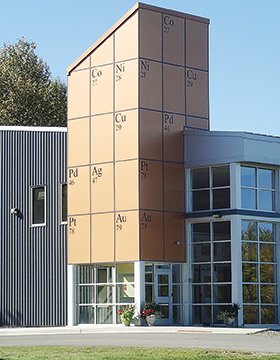Support the Timberjay by making a donation.
Twin Metals makes moves at Birch Lake
Subsidiary Franconia Minerals applies for new state permits to further explore Birch Lake deposit
REGIONAL— With its federal mineral leases canceled and a 20-year moratorium on new mineral leasing now in place over a large portion of the Superior National Forest, Twin Metals is looking to …
This item is available in full to subscribers.
Attention subscribers
To continue reading, you will need to either log in to your subscriber account, or purchase a new subscription.
If you are a current print subscriber, you can set up a free website account and connect your subscription to it by clicking here.
If you are a digital subscriber with an active, online-only subscription then you already have an account here. Just reset your password if you've not yet logged in to your account on this new site.
Otherwise, click here to view your options for subscribing.
Please log in to continue |
Twin Metals makes moves at Birch Lake
Subsidiary Franconia Minerals applies for new state permits to further explore Birch Lake deposit
REGIONAL— With its federal mineral leases canceled and a 20-year moratorium on new mineral leasing now in place over a large portion of the Superior National Forest, Twin Metals is looking to state lands in its bid to open a copper-nickel mine in the region.
Franconia Minerals, a wholly owned subsidiary of Twin Metals, has applied to the Minnesota Department of Natural Resources to begin exploratory drilling in an area that was heavily explored more than a decade ago by longtime prospector Ernie Lehmann and Franconia Minerals, one of several exploration companies founded by Lehmann.
Identified as the Birch Lake deposit, the lode of copper-nickel and platinum group metals is known to be deep, and is located several hundred feet down. But the site, located about five miles east of Babbitt, is not as fully explored as the Maturi deposit, which had been the focus of the now defunct mine plan issued by Twin Metals two years ago. At this point, most of the Birch Lake deposit qualifies as an “inferred” resource, which is the lowest level of certainty in the mining industry. Further drilling by Franconia could help Twin Metals raise their degree of confidence to “indicated” (the next step up) or “measured,” which is the highest degree of certainty.
Franconia proposes to conduct drilling at six sites, three located along the eastern shore of Bob Bay with the remaining three located just to the southeast of Unnamed Creek, near the Dunka Pit. Franconia Minerals and Rendfield Land Co., a subsidiary of ALLETE, are the surface landowners in much of the area that would be subject to the drilling, while the state of Minnesota controls the mineral rights.
The drill sites are all located about five miles southwest of the Maturi deposit and could be subject to use for exploratory drilling through March 31, 2025 if the application is approved. The DNR had until Oct. 12 to deny the application as submitted or the request is approved automatically. State mineral leases are issued for 50-year terms at which point they expire. The cost of the lease does increase over time, making it more likely for the company to consider the cost-benefit of the lease, particularly when the lease is not generating revenue. According to the DNR, no non-ferrous lease has reached the end of a 50-year lease term.
Such exploratory applications are routinely approved by the DNR without much public notice or comment. That’s not the case this time, however, as groups that had beat back Twin Metals’ earlier mine proposal are objecting.
In an Oct. 9 letter to DNR Commissioner Sarah Strommen and Pollution Control Agency Commissioner Katrina Kessler, Matt Norton, policy and science director for Northeastern Minnesotans for Wilderness, notes that the DNR is a party to an ongoing lawsuit challenging the ability of current state rules to protect the Boundary Waters Canoe Area Wilderness from potential impacts from copper-nickel mining. As part of the legal proceedings in that case, brought under the Minnesota Environmental Rights Act, or MERA, the DNR has already acknowledged that existing law does not adequately protect the wilderness from the noise or light pollution from mining operations. “By demanding that DNR approve exploratory drilling in the Rainy River-Headwaters watershed before the MERA action and related administrative proceedings have concluded, Franconia is essentially requiring DNR to preempt the ongoing MERA lawsuit, short circuiting DNR’s analysis on noise and light pollution,” wrote Norton in the letter.
Norton notes, as well, that Birch Lake is impaired due to mercury levels in fish tissues and that NMW’s own water quality monitoring program has found the lake exceeds the wild rice standard for sulfate as well. “It is reasonable to assume that Franconia’s exploration activities will only exacerbate the two existing impairments by adding sulfate to Birch Lake and increased mercury in fish tissue in Birch Lake,” states Norton.
Even if the exploratory drilling is permitted, an operating mine in that area remains a distant prospect at best, with significant additional drilling almost certainly required to fully characterize the deposit.
An editor’s note: An earlier version of this story reported that the DNR had not responded to questions submitted by the Timberjay. In fact, the DNR did respond but their emailed response was overlooked. Information from their response has now been incorporated into this story.






